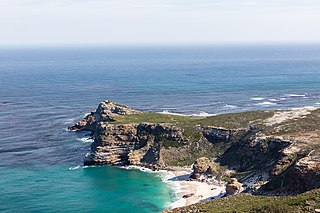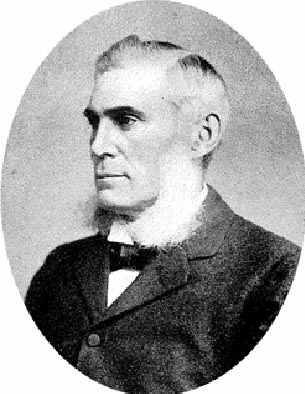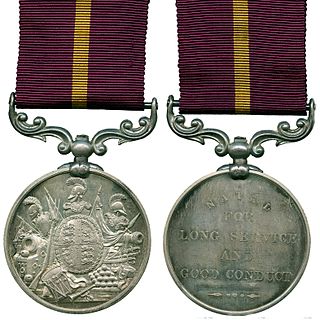Related Research Articles

The coat of arms of South Africa is the main heraldic insignia of South Africa. The present coat of arms was introduced on Freedom Day, 27 April 2000, and was designed by Iaan Bekker. It replaced the earlier national arms, which had been in use since 1910. The motto is written in the extinct ǀXam, member of the Khoisan languages, and translates literally to "diverse people unite". The previous motto, in Latin, was Ex Unitate Vires, translated as "From unity, strength".

The Cape of Good Hope is a rocky headland on the Atlantic coast of the Cape Peninsula in South Africa.

The Cape Colony, also known as the Cape of Good Hope, was a British colony in present-day South Africa named after the Cape of Good Hope. It existed from 1795 to 1802, and again from 1806 to 1910, when it united with three other colonies to form the Union of South Africa, then became the Cape Province, which existed even after 1961, when South Africa had become a republic, albeit, temporarily outside the Commonwealth of Nations (1961–94).

The coat of arms of the Cape Colony was the official heraldic symbol of the Cape Colony as a British colony from 1875 to 1910, and as a province of South Africa from 1910 to 1994.

British Kaffraria was a British colony/subordinate administrative entity in present-day South Africa, consisting of the districts now known as Qonce and East London. It was also called Queen Adelaide's Province and, unofficially, British Kaffiria and Kaffirland.

John Henry de Villiers, 1st Baron de Villiers, was a Cape lawyer and judge. He was Attorney-General in the Molteno Government, Chief Justice for the Cape Colony, and later the first Chief Justice for the Union of South Africa. As the country's most senior judge for 40 of its formative years, De Villiers is often considered the most influential judge in South African history.

The Queen's South Africa Medal is a British campaign medal awarded to British and Colonial military personnel, and to civilians employed in an official capacity, who served in the Second Boer War in South Africa. Altogether twenty-six clasps were awarded, to indicate participation in particular actions and campaigns.

The Western Cape Division of the High Court of South Africa is a superior court of law with general jurisdiction over the Western Cape province of South Africa. The division, which sits at Cape Town, consists of 31 judges led by Acting Judge President Patricia Goliath, former Acting Constitutional Court Justice.

This is a survey of the postage stamps and postal history of Cape of Good Hope.

The Union of South Africa Commemoration Medal is a military and civil commemorative medal which was awarded to commemorate the opening of the first Union Parliament by the Duke of Connaught and Strathearn in 1910. It may be considered as the first of many independence medals which were instituted throughout the Commonwealth during the 20th century.
The Province of Cape of Good Hope Official Gazette was the government gazette of the Province of the Cape of Good Hope.

In 1895, Queen Victoria authorised Colonial governments to adopt various British military decorations and medals and to award them to their local military forces. The Colony of Natal introduced this system in August 1895 and, in 1897, instituted the Distinguished Conduct Medal (Natal), post-nominal letters DCM.

In May 1895, Queen Victoria authorised Colonial governments to adopt various British military medals and to award them to their local military forces. The Cape of Good Hope introduced this system in September 1895 and, in 1896, instituted the Army Long Service and Good Conduct Medal (Cape of Good Hope).

In May 1895, Queen Victoria authorised Colonial governments to adopt various British military medals and to award them to their local military forces. The Colony of Natal introduced this system in August 1895 and, in 1897, instituted the Army Long Service and Good Conduct Medal (Natal).

In May 1895, Queen Victoria authorised Colonial governments to adopt various British military medals and to award them to members of their local permanent military forces. The Cape of Good Hope introduced this system in September 1895 and, in 1896, instituted the Meritorious Service Medal (Cape of Good Hope).

In May 1895, Queen Victoria authorised Colonial governments to adopt various British military medals and to award them to members of their local permanent military forces. The Colony of Natal introduced this system in August 1895 and, in 1897, instituted the Meritorious Service Medal (Natal).

In May 1895, Queen Victoria authorised Colonial governments to adopt various British military medals and to award them to their local permanent military forces. The Cape of Good Hope and Colony of Natal instituted their own territorial versions of the Meritorious Service Medal in terms of this authority. These two medals remained in use in the respective territories until after the establishment of the Union of South Africa in 1910.
The 1862 Birthday Honours were appointments by Queen Victoria to various orders and honours to reward and highlight good works by citizens of the British Empire. The appointments were made to celebrate the official birthday of the Queen, and were published in The London Gazette on 23 May and 25 July 1862.
The Cape Mounted Police was the principal law enforcement agency of the Cape Colony during its last three decades. In addition to its ordinary policing duties, it was a para-military organisation, which saw active service in several campaigns and operations, including the Anglo-Boer War (1899–1902). The force was fully militarised in 1913 and transferred to the new South African Army as a mounted rifle regiment.
References
- ↑ CAPE OF GOOD HOPE (BRITISH COLONY) CRL Foreign Official Gazette Database, 2014. Retrieved 14 May 2014. Archived here.